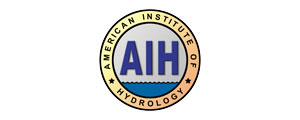What Counts as Continuing Education for Professional Hydrologists?
Professional Hydrologists, certified by the American Institute of Hydrology (AIH), apply hydrology as a profession to help protect public interests and the profession from non-professional, sub-standard or unethical practices in a field involving water issues. Because of the continually changing nature of the field of hydrology and societal challenges, Professional Hydrologists need to continue their professional development throughout their careers and keep current in their specialty fields by engaging in professional practice, participating in continuing education courses, keeping up with the technical literature, and attending professional meetings and seminars. Professional Development Hour (PDH), or Professional Development Credit (PDC), is defined as one contact hour of instruction, presentation or study towards the goal of staying current in the field of practice. Specific competency requirements are determined by the Executive Committee on a periodic basis.
Members are responsible for keeping records of the number of PDH/PDC they earn along with associated documentation that can be validated by AIH. Documentation is due by December 31 of every 5 years computed from the anniversary year of the individual member in order to remain in compliance with certification. A minimum of 60 PDH/PDCs is required over 5 years to be eligible for recertification (ref – form, links and bylaws). A recommended template for a log of records for submission to AIH is shown followed by a table on conversion factors for PDH/PDC. While the list is in no way exhaustive, AIH deems the engagement by professional hydrologists in one or some of the following activities as continuing education to acquire the necessary PDH/PDCs each year.
- Receiving training on hydrologic advances or their applications from experts. This can involve learning practical techniques and methods involving hydrology at a meeting endorsed or organized by a professional organization or scientific society or governmental agencies. Examples of societies or organizations can be, but not limited to, American Institute of Hydrology (AIH), American Water Resources Association (AWRA), Environment and Water Research Institute (EWRI) of American Society of Civil Engineers, American Geophysical Union (AGU), American Meteorological Society (AMS), Consortium of Universities for the Advancement of Hydrologic Science, Inc. (CUAHSI) and American Water Works Association (AWWA). Examples of governmental agencies can be, but not limited to, Flood Control Agencies and Districts, State Department of Natural Resources (or equivalent)U.S. Geological Survey (USGS), Bureau of Reclamation (BOR), Army Corps of Engineers (ACOE), U.S. Forest Service (USFS), Environmental Protection Agency (EPA) and U.S. Bureau of Land Management (BLM).
- Completing online courses or correspondence courses on hydrology-aligned topics relevant to the practicing field of the professional hydrologist. For example, completing a short course on Low Impact Development or Stormwater Management is considered appropriate for a professional hydrologist who works on urban drainage systems.
- Completing or attending seminars or webinars that relates to professional practice of the professional hydrologist.
- Publishing technical papers and reports and attending or presenting at technical or professional society meetings and conferences where a topic related to the practice of the professional hydrologist is a principal part of the program or paper/report.
- Teaching a course that covers more than 50% of the topics related to hydrology for the first time used for PH credits, or if substantial time has been spent in updating material if previously taught. Creating and teaching a course will count double the hours of the actual instruction.
- Engagement in Management, Ethics or Leadership training through professional societies or professional education providers. The maximum credits allowed for this category is 1 credit hour for each Management, Ethics, and Leadership per calendar year for a total maximum of 3 credit hours per year.
The AIH Executive Board, or its designated representative(s), will determine if the submitted activities can be credited for PDH/PDCs.
AIH Recertification Affidavit Form
IACET – International Association of Continuing Education and Training
Information on Continuing Education Units (CEU) by IACET
CEUs for meeting Licensing, Certification, and Regulatory Mandates by IACET
American Society of Civil Engineers (ASCE) Environmental and Water Research Institute (EWRI)
International Erosion Control Continuing Education
Information on Professional Development Hours for Engineers
American Water Resources Association
American Geophysical Union (AGU) Hydrology Section
American Meteorological Society (AMS) committee on Hydrology
Consortium of Universities for the Advancement of Hydrologic Science (CUAHSI)
| Item # | Activity | PDH/PDCs |
| 1 | Successful completion of continuing education courses that grant continuation education unit (CEU) | 1 CEU = 10 PDHs/PDCs (ref: IACET; Dept of Education) |
| 2 | Attending professional/technical seminars, in-house courses, workshops, professional/technical conventions and conferences. | 1 Contact hour = 1 PDH/PDC All day activity = 6 PDHs/PDCs |
| 3 | Completing long distance seminars or courses | 1 Contact hour = 1 PDH/PDC |
| 4 | Successful completion of college courses as a student:
|
|
| 5 | Professional paper prepared or submitted Professional paper presented orally at a meeting | 2 PDHs/PDCs 1 PDH/PDC |
| 6 | Guest lecture for a college course | 1 PDH/PDC per hour of lecture |
| 7 | Each published professional or technical paper, article, chapter or report:
|
|
| 8 | Professional Ethics Training | 2 PDHs/PDCs per year |
| 9 | 1. Accountable leadership in a relevant professional or technical organization 2. Service as a board member of a relevant professional society | 1.5 PDHs/PDCs per organization per year 2. 2 PDHs/PDCs per year |
| 10 | Each patent (during year patent is issued) | 50 PDHs/PDCs |
